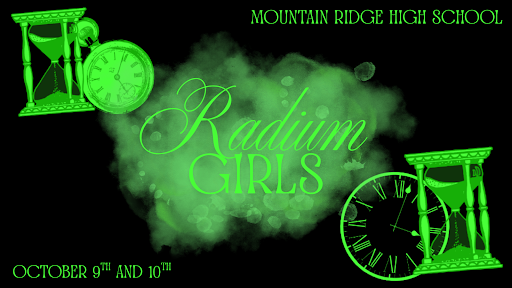Santa Claus: Truth Exposed
December 19, 2018
Think back to when you were younger, and when you began to question Santa’s existence. Maybe it was a sudden realization, maybe your older brothers and sisters or friends told you, or maybe you never believed in him to begin with.
Almost everybody has that moment as a kid, and their parents have to adjust the way Christmas is celebrated, since Santa no longer exists in their kid’s head. Although we often forget that teachers have their own lives outside of the classroom, we have to remember that they are sons, daughters, brothers, sisters, and parents as well.
So when their children discover Santa isn’t real, the way they celebrate Christmas may start to change. No more cookies for Santa, or carrots for reindeer, no more tracking Santa’s sleigh, and no more presents from our old man, Santa Claus.
While presents from Santa given to kids when reality hits often stops, Mr. Lang, a math teacher here at Ridge, didn’t stop giving his children presents labeled ‘from Santa.’ In fact, his kids still receive them to this day.
“The idea of Santa can always be there. Santa represents good cheer and the overall feel of the holiday season,” Lang said. “Don’t ever let that go.”
However for Mrs. Schramm, a science teacher, she thinks Santa Claus should be undeniably fictional by the time somebody is an adult.
“Well, I’d say by the time you are an adult, otherwise, we call that ‘crazy’ or ‘delusional’ and so you could end up getting mandatory psych evals!” Mrs. Schramm says.
While most of us don’t believe in Santa anymore at a high school age, it doesn’t seem like we’ll be called crazy for that. But when you think about how your parents continued to tell you Santa was real when you were a child, it doesn’t seem like it would be too difficult to believe in his existence.
For example, Mrs. Moya, an ELA teacher at Mountain Ridge, used to enjoy convincing her kids – now 19 and 15 – that Santa was real.
“I had them put out milk and cookies for Santa and carrots for his reindeer. I would eat them and leave crumbs so they would think he was real. Also, we would watch Norad’s Santa Radar and follow him across the globe on Christmas Eve online!” Moya claims.
However, most of us and our parents can agree it was no big deal when we realized that Santa’s sleigh ride simply isn’t possible. Most kids just feel like conspiracy theorists when they think about the logistics of Santa’s trip, and it’s generally not a life-changing moment. Most of us realized it at about 9 or 10, and so did our teachers.
Everybody has a different idea of Santa. To some, Santa Claus is just a man who delivers presents. To others, he represents much more. And whether it’s the joy of the season, or just a good deed, what Santa represents is best left to each individual, teachers included.





